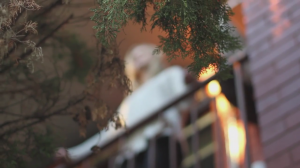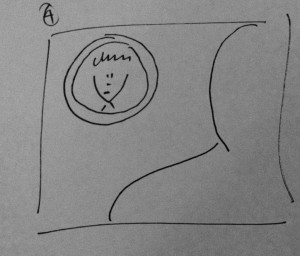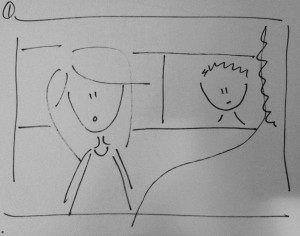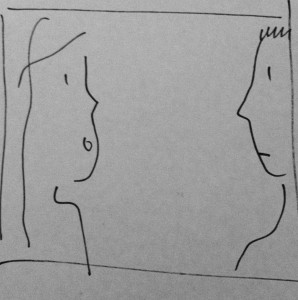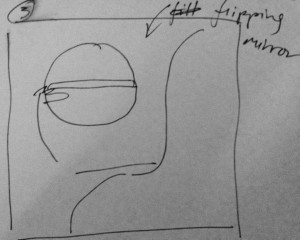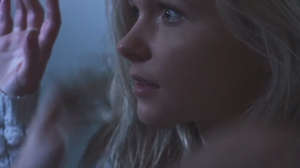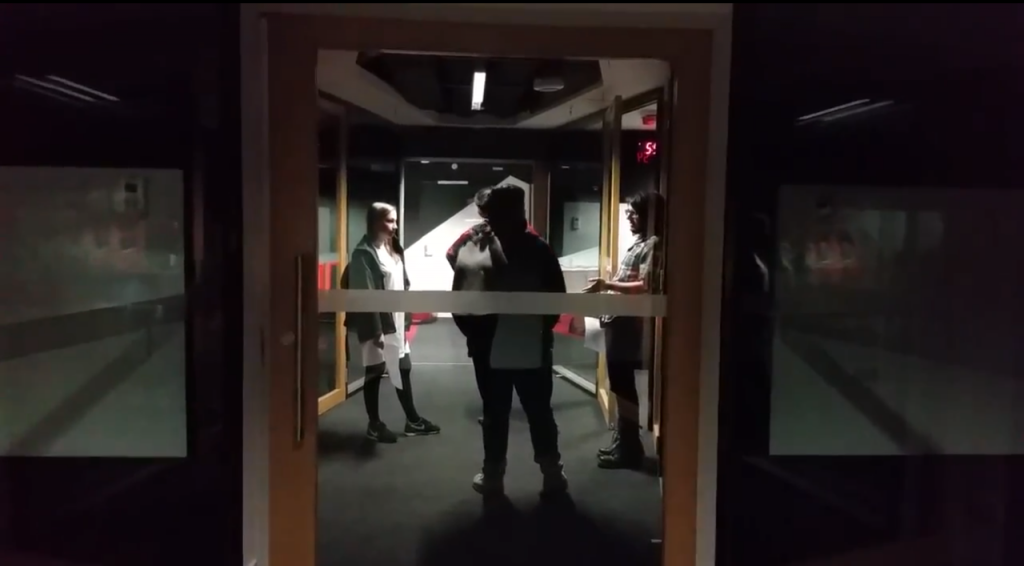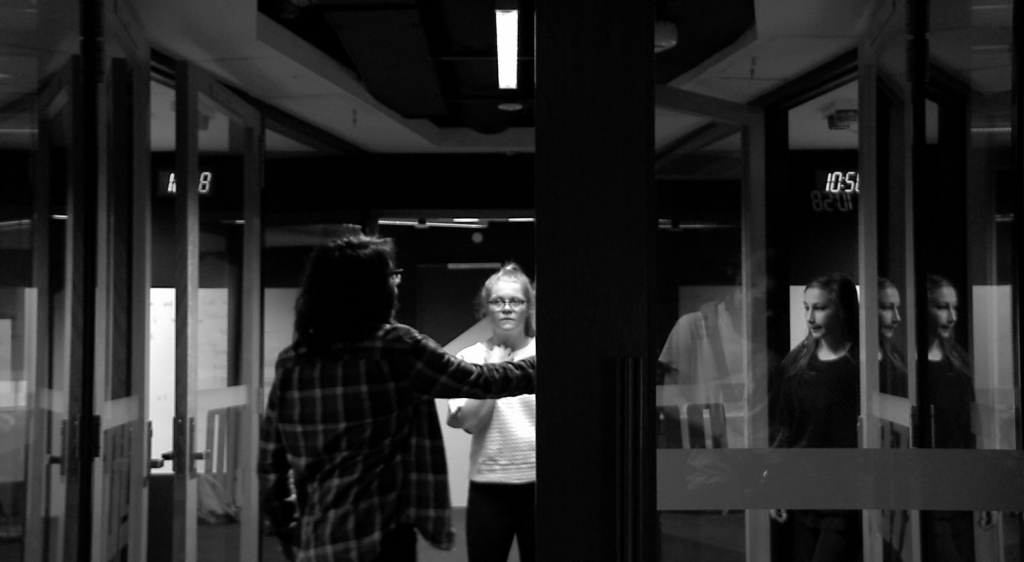Andrè Bazin (1918-1958) was a profound cinema theorist and critic, whose writings for Esprit and Cahiers du Cinèma have become some of the most influential pieces in the history of film. During World War II, Bazin realised that there was a need for a new kind of film critic. Most film reviews at this time, even in Bazin’s home country of France, were written about popular Hollywood films and mainly concentrated on the narrative of films. However, Bazin wanted the public to become aware of how films were actually created and so he began to write about the lighting, camera, set design, editing, music, scripting, acting, and direction of films. He believed that his criticisms would encourage the public to analyse the cinema experience and would inspire filmmakers to reconsider their work and their subjects. After France was liberated from Nazi rule, he decided to create a journal solely devoted to the art form of cinema, and thus, in 1951, Caheirs du Cinèma was born.
Bazin is considered to have given rise to the French ‘New Wave’ film movement during the 1950s and ‘60s, as well as the auteur theory of cinema. Unfortunately, he suffered an early death and was not able to witness the flourishing of his ideas that primarily eventuated after 1958. His articles call for a ‘personal cinema’ as he believed that a film should represent a director’s ‘personal vision’. He considered the director as a film’s principle creative source and in turn believed that a film should reflect the director’s unique ‘stylistic signature’. He favoured films that ‘resisted formulaic cinema and who demanded a different relation of language to material and of spectator to spectacle’(Dudley 2013, p.168). For instance, he often praised Italian Neorealist films like Vittorio De Sica’s Bicycle Thieves (1948) and documentary art films like Robert Flaherty’s Nanook of the North (1922) which were primarily made on location, without conventional story lines or definitive scripts. Andrew Dudley asserts that Bazin’s ‘… goal was never to elevate cinema to parity with…traditional arts [theatre and paintings]; rather, he believed, cinema’s “documentary” attributes set it adjacent to the arts’ (Andrew cited in Bazin 1971, p. xiv). Ultimately he saw cinema as a different type art form which could reflect the individuality of its ‘author’ and of reality itself. However, it is important to note that he did eventually distance himself from the strict ideals surrounding film authorship as he ‘felt that it ignored the commercial context in which most movies were produced’ (Cardullo 2011, p.9). In essence, he thought that it was difficult to attribute a certain film’s style solely to the director when there were often many contributing factors to the overall ‘distinctiveness’ of the text. Nevertheless his film criticisms and theories became the basis for others’ writings on authorship, which eventually developed into what we know today as the ‘auteur theory’.
Bazin’s article ‘The Virtues and Limitations of Montage’, in his infamous collection of works ‘What is Cinema?’ (translated by Hugh Gray in 1971), displays his bias toward ‘the long take’. He contends that montage sequences are ultimately less realistic than long takes because they ‘disrepect’ how time and space exist on Earth. He uses the example of anthropomorphism in children’s films. He explains that because animals cannot feel the same emotions as humans, and (in basic terms), they cannot act, montage editing must be utilised in order to ‘trick’ the audience into attributing human feelings to real-life animal characters. Bazin discusses Jean Tourane’s Une Fèe pas comme les autres (1956) whose animal characters never ‘actually do the things they seem to be doing. When they do, it is by trick, either with a hand offscreen guiding them, or an artificial paw like a marionette on a string’ (Bazin 1971, p. 44). Thus, he demonstrates that even though there is great power in editing these juxtaposing shots together to create a story, the apparent action the audience is viewing does not actually exist and on some level, they are aware of the illusion. Therefore, he argues, long takes are a more pure form of cinema because they have a ‘straightforward photogenic respect for the unity of space’(Bazin 1971, p. 46). He contrasts Une Fèe pas comme les autres with Albert Lamorisse’s film Ballon Rougge (1956), which uses long takes and visual ‘physical’ illusions to trick the audience into thinking that the Ballon entity can move by itself, rather than utilising montage to create the illusion. Bazin asserts that ‘the important thing is not whether the trick can be spotted but whether or not trickery is used, just as the beauty of a copy is no substitute for the authenticity of a Vermeer’ (Bazin 1971, p. 46). With this quote he seems to suggest that a ‘real’ illusion (one that could be witnessed in actuality) is more powerful and believable than the illusion of montage. Another reason that Bazin seems to favour the long take over montage is that he believed it left more room for the audience’s subjective interpretation of a film. He felt that montage limited the possible different readings of a text and that long takes demanded more involvement from the audience because these type of shots did not spoon feed information to the viewers. Ultimately he argued against the Soviet montage filmmakers of the ’30s and ’40s who believed that editing was the foundation of film. Instead, Bazin praised long takes and the mise en scène of a shot, which he felt represented ‘true continuity’ and were a ‘step toward the attainment of total realism on film’ (Cardullo 2011, p.7).
Bazin’s writings were heavily influential, particularly for other writers of Caheirs du Cinèma. François Truffaut and Jean-Luc Godard are amongst those who took on Bazin’s theoretical ideals and realised them through their own films. The year after Bazin’s death, Truffaut’s The 400 Blows (1959) was released in dedication to Bazin at the Venice Film Festival. This film, along with Alain Resnais’ Hiroshima With Love (1959), are considered the first films of the French ‘La Nouvelle Vague’/New Wave (Dudley 2013). This cinematic movement was characterised by the use of hand held cameras, long takes, real world locations, improvised dialogue and discontinuous editing, which were all in some way inspired by Bazin’s theories (Make A Wave – French New Wave 2012). Bazin’s writings also influenced other film theorists. For instance, Andrew Sarris, the writer of The American Cinema, furthered Bazin’s fundamental principles of film authorship by formulating ‘the auteur theory’.
Although Bazinian theories of cinema have been heavily debated since their conception, no one can deny the large impact Andre Bazin has had on cinema as an art form. His ideas surrounding content and form, adaption, montage, neorealism and authorship (to name a few) are now being studied in universities around the world. Prior to Bazin, cinema was a rather unexplored theoretical field. It was in fact he who ‘projected that distant day when film studies would enter the university curriculum – and it was Bazin more than anyone else who played the role of midwife’ (Cardullo 2011, p.2).
REFERENCES
Bazin, A 1971, What is Cinema? Volume II, University of California Press, London, England.
Cardullo, B (ed) 2011, André Bazin and Italian Neorealism, Bloomsbury Publishing, USA.
Dudley, A 2013, Andre Bazin, Oxford University Press, Oxford, USA.
Make A Wave – French New Wave 2012, Characteristics of French New Wave Films, Make A Wave – French New Wave, viewed 11 May 2015, <http://makeawave-frenchnewwave.blogspot.com.au/2012/08/characteristics-of-french-new-wave-films.html>.
